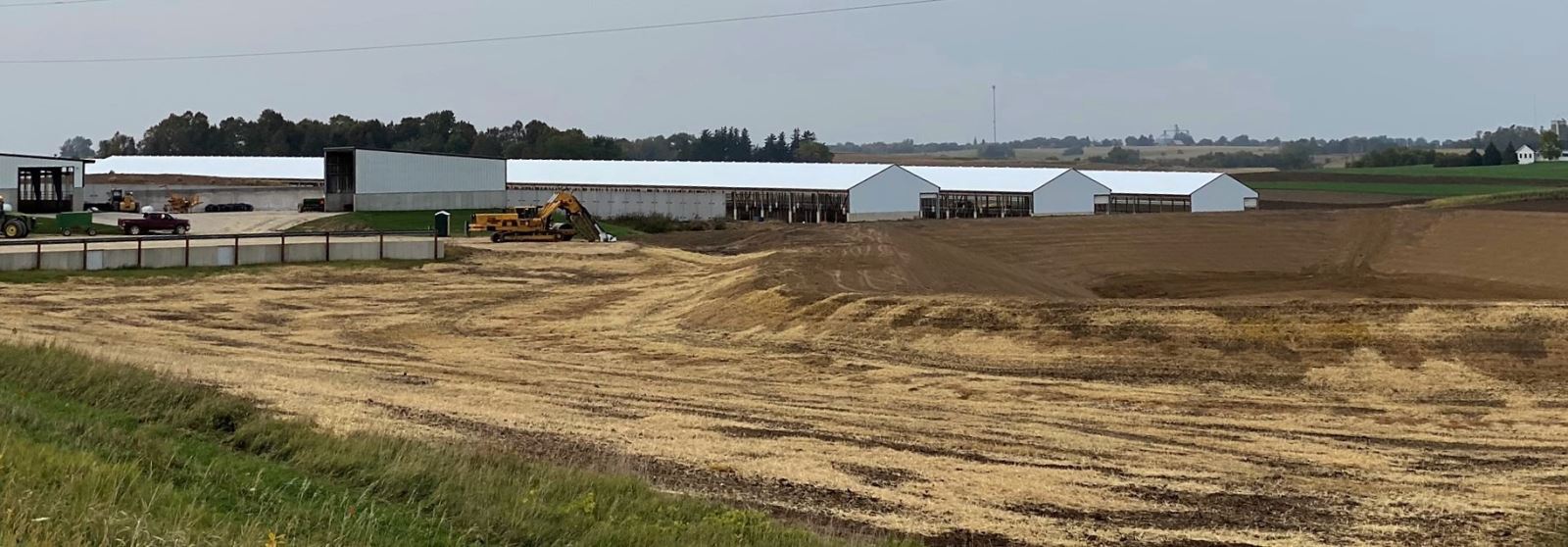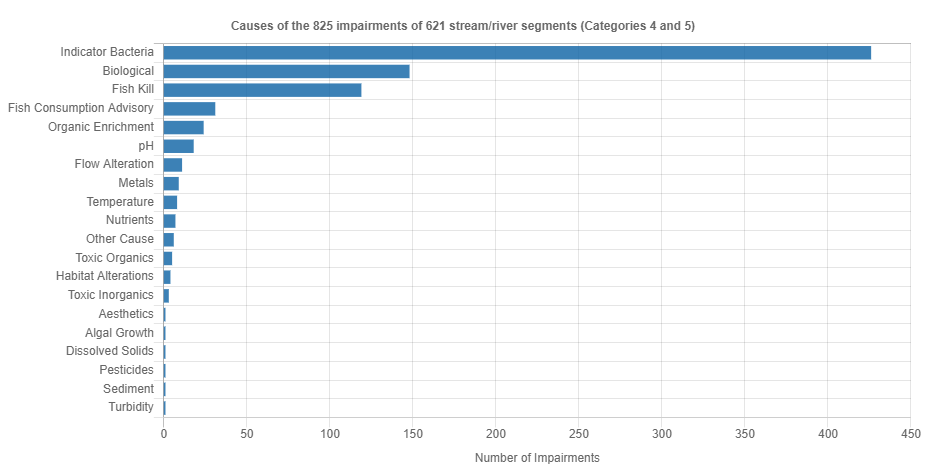The Land Where CAFOs Reign Supreme
posted
by Michael Schmidt on Friday, October 23, 2020
UPDATE: In response to public comments identifying flaws in the nutrient management plan for Supreme Beef, DNR approved a smaller facility in 2020. Supreme Beef submitted a new nutrient management plan that opened for comment in February 2021, with a public hearing scheduled for March 1 and comments due by 4:30 on March 8, 2021.
Earlier this month, the Iowa DNR approved a nutrient management plan for a concentrated animal feeding operation (CAFO) called Supreme Beef near Monona, Iowa, located in northeast Clayton County.
Although the procedure for a NMP is common, this approval was unusual: the DNR restricted the CAFO to fewer than 25 percent of the animals requested. Even with this reduction, the facility will be allowed to hold 2,700 cattle in an open feedlot, in karst topography, near a trout stream. The case exemplifies the failures of Iowa’s CAFO approval process and the need to reform how we protect sensitive landscapes, ensuring proper land application of manure, and DNR oversight.

The Supreme Beef facility is being built on karst terrain in Northeast Iowa, where shallow limestone bedrock allows rapid movement of water between surface soils and shallow groundwater aquifers. It’s an area of streams that infiltrate to groundwater, springs, and coldwater fisheries. Many of the state’s best trout streams are in the area.
Supreme Beef proposed an open feedlot near Bloody Run Creek – one of those trout streams that is designated an Outstanding Iowa Water – that would run into a manure basin capable of holding 38 million gallons. The manure will be land-applied as a fertilizer, which is the typical method of manure “disposal” across Iowa.
DNR rules require public notice of the nutrient management plan for large CAFOs, which explains how the manure will be used to help grow crops in the area. DNR received comments from area residents who pointed out miscalculations in the nutrient plan that would have allowed gross overapplication of the manure on nearby farm ground. Those comments forced the DNR to acknowledge the problems in the plan and reduce the allowable feedlot size from 11,600 head of cattle to 2,700. Even with the reduced size, the facility will generate an estimated seven million gallons of manure per year.
The notion of a giant feedlot being put in this landscape raised alarm bells for many people: IEC helped organize a public forum in 2017 about an earlier incarnation of the proposed CAFO, attracting over 100 people and the executive director of the DNR. IEC also called for the project to stop. After years of delays and internal conflicts, the project began moving forward again earlier this year.
“Master Mixing” Waste and Water
Iowa’s “master matrix” scoring system allows feedlots to be built near our most pristine waters and on land that maximizes the chances of polluting those waters. Iowa has few high-quality trout streams and even fewer “Outstanding Iowa Waters.” Bloody Run Creek, the watershed of the proposed CAFO, is both. By law, Outstanding Iowa Waters receive extra protection from degradation. But the master matrix does not account for that protection – instead it prevents DNR, local governments, and Iowans from protecting local resources by restricting any local control over CAFO siting and allowing minimal public input. The cumulative effect of the law has been a rapid growth in the number of CAFOs and livestock in the state. Animals in Iowa now have a manure output equal to 134 million people. We have hundreds of waterbodies impaired for E. coli and frequent reports of manure spills. If you wonder if there’s poop in the water, the answer is probably yes.

Iowa stream and river impairments by cause. Courtesy of Iowa DNR.
Monitoring data also show thousands of private wells in Iowa are contaminated by nitrate and bacteria. In a 2019 analysis by EWG and IEC, more than 40 percent of tested wells had bacteria, for which there is no safe level of contamination, and more than 6,600 wells exceeded the nitrate standard for drinking water systems. The concentrations of nitrate have also been rising. High nitrate concentrations are particularly prevalent in northeast Iowa due to the porous karst topography.
A minimum step to start addressing the problem is to protect Iowa’s sensitive areas from new CAFOs. Existing law prohibits siting a CAFO immediately adjacent to a sinkhole, but manure management plans do not have to account for how karst terrain can connect the land surface to shallow groundwater.
The Untreated Sewage Problem
The manure generated by CAFOs can have value as a fertilizer, but only if is actually taken up by vegetation. Applying too much manure means the excess runs into our surface and groundwater. We have strong evidence that is happening, because Iowa is hemorrhaging nitrogen.
Applying manure on frozen or snow-covered ground is an obvious way to send it directly to surface water when the snow melts. Iowa law prohibits winter application of manure in certain circumstances. That prohibition will not apply to Supreme Beef – as an open feedlot, it is not regulated by the winter prohibition. Even if it were, it could spread manure during temporary thaws or apply for emergency exemptions (which the DNR has regularly granted for years). Expanding the winter prohibition would restrict manure application that is clearly just getting rid of waste by sending it to our water.
DNR’s Unfulfilled Mandate
Comments from nearby residents identified some uncontroverted errors in Supreme Beef’s nutrient management plan. Even with those comments, manure from the CAFO could lead to degradation of outstanding Iowa waters, which the state acknowledges deserve special protection. Because of the legal framework we call the master matrix, DNR only has the power to force a CAFO to have an accurate manure management plan. Whether DNR is capable of that now is unclear: many manure management plans are on paper, so verifying a plan is compliant requires significant time, and DNR is understaffed. Citizen efforts to verify compliance have been labor-intensive and found problems with DNR approvals and enforcement.
DNR needs clearer authority to stop CAFOs that pose a risk to the state’s waters – including, but not limited to the few high-quality waters we still have. We will need changes to state law to solve these issues, as well as changes to DNR’s implementation of the laws we do have. DNR needs more capacity to enforce the laws. And DNR needs to require all manure management plans be available to the public electronically to allow more efficient compliance reviews and increased transparency.
Fixing the Problem
Stopping the manure pollution in Iowa’s creeks, rivers, and lakes will require changes to the statute and DNR rules. We can start by protecting our most sensitive areas, by stopping manure application that we know will end up in the water, and by giving DNR the power and duty it needs to fulfill its mission to protect our natural resources. But that’s just a start – the state can and should do much more to protect our waters from the billions of gallons of manure being applied to Iowa’s agricultural lands each year. Until then, we can expect to keep seeing drinking water polluted by nitrate and bacteria, our remaining clean waters poisoned, and a DNR most notable for its absence.
- cafos
- karst
- land stewardship
- nitrate pollution
- water quality